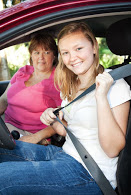 As kids become teenagers and young adults, parents all have the same worry, and with good reason: Teens and young adults are much more likely to be involved in auto accidents than virtually any other group of drivers on the road. Part of this obviously has to do with the inexperience of the new driver; however, there are also many other factors that must be considered by every parent who is facing the prospect of a new teen driver on the road.
As kids become teenagers and young adults, parents all have the same worry, and with good reason: Teens and young adults are much more likely to be involved in auto accidents than virtually any other group of drivers on the road. Part of this obviously has to do with the inexperience of the new driver; however, there are also many other factors that must be considered by every parent who is facing the prospect of a new teen driver on the road.
– The Lack of Driving Skill
Many state driving tests have actually been censured by special interest groups because they do not accurately portray the skill of a new driver. Although a lack of experience definitely contributes to many of the accidents that young drivers find themselves in, the lack of driving skill is another aspect of this statistic. Younger drivers get into accidents that older drivers might be able to avoid because of their familiarity with the small hazards of the road that cannot be accounted for on a standardized, static test.
– Is a solution around the corner?
The combined efforts of The Children’s Hospital of Philadelphia’s (CHOP) Center for Injury Research and Prevention and the University of Pennsylvania have come up with a novel idea on how to better assess driving technique of young drivers. The Simulated Driving Assessment (SDA) is a much more accurate portrayal of how a young driver will behave on the road than many of the stale tests that the state gives.
The University of Pennsylvania and CHOP published their results in the Injury Prevention journal. Their results were definitely interesting for anyone who is looking for a better way to assess the true skill of a young driver who is looking to receive a license. Because of the real-time techniques and real-world scenarios that the SDA simulated, young drivers were not able to finagle their way out of situations that would cause a problem on the road.
The test was created after a decade of research focused on the types of crashes that young drivers have as well as a five-year research period into how to best produce these situations as a simulation within the test.
– The Results of the SDA Testing
During the SDA testing, a full 43 percent of newly licensed teenagers had a simulated crash compared with only 29 percent of more experienced drivers. The SDA testing found that young drivers were fairly adept at the basic skills of driving such as putting on a turn signal or breaking at a stop sign. The vast majority of the teens had problems during the more advanced real world simulations in which real-time decisions had to be made and advanced maneuvers were the only way to stay out of a crash. For instance, anticipating a hazard rather than reacting to it proved quite difficult for teen drivers. This coincides with the type of crashes that young drivers find themselves in most of the time – maneuvers involving long left turns, rear end situations and running themselves off of roads with difficult structures.
– The Final Word on Helping Teens Avoid Crashes
The results seem to show that the older types of testing simply do not make an issue of the situations in which teens would actually have an increased chance of an accident. Simulated tests are the preferred method for creating the situations that a teenager would be more likely to have an accident in. With this knowledge in tow, perhaps better driving courses can be created that would help to simulate real world conditions for teenagers in the classroom before they got to their state driving test.
 California Accident Attorneys Blog
California Accident Attorneys Blog

